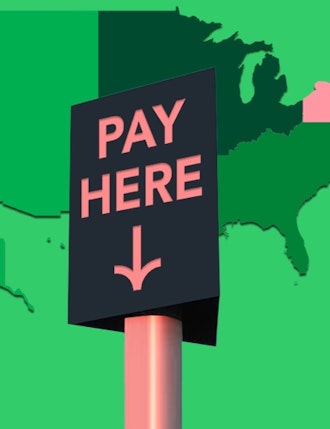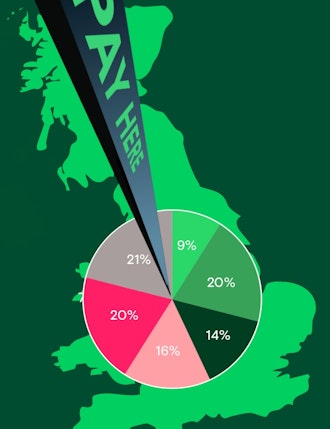Retailers continue to face ongoing challenges in their brick and mortar stores. First there was the impact of the pandemic and the rise of e-commerce, and now retailers are dealing with increasing inflation and a cost of living crisis. Whilst retail sales in the UK grew 0.5% in April 2023, they dropped 1.2% two months previously.
But customers are still shopping at physical stores, and when they do they expect a customer experience that is fitting for 2023. And that means one thing, embracing technology. Here we look at five ways you can improve in-person payments across your retail store.
1. Listen to the needs of your customers
Just as you do with your online sales, you need to define your target audience. Who is shopping in your retail stores? What is the value of their average order, how can you help them in store and what is their preferred method of payment?
If for example, you know your audience consists of Gen Z you’ll need to think about the payment methods they want to use and cater to them. Gen Z are of course digital natives and expect retailers to cater for their technology-first approach and their loyalty to both Apple Pay and Google Pay.
2. Offer alternative payment methods
Yes, once it was all about cash and card in your retail stores. And whilst debit cards may remain the preferred method of payment, it’s not the only game in town.
We’ve already mentioned Google Pay and Apple Pay and the prevalence of digital wallets amongst Gen Z, but it isn’t the only option you can offer your customers. Buy now, pay later (BNPL) may have started online but is now widely offered in physical retail stores too. You may also want to consider offering your customers a subscription model as well, that they can sign up to in-store.
3. Consider self-service
For many retail customers, self-service is becoming their number one choice for paying in-store. In fact, as many as 40% of people prefer self-service over human contact. With self-service, customers can make purchases and complete transactions on their own without the need for a sales rep.
A self-service system typically consists of a touch screen interface, a barcode scanner or RFID reader and a payment terminal – they are all integrated into a single device. Customers use the touch screen to select the items they want to buy, scan them with the barcode scanner or use the RFID reader and then pay for their purchase with cash, card or mobile.
Get it right and not only are you offering your customers one of their preferred payment methods, but you can also cut down the number of staff you need on the shopfloor.
4. Get the technology in place to make it happen
So, we’ve just touched on the technology needed for self-service payments, but it’s just one aspect of the new technology that your customers expect in-store. To accept mobile payments, whether Google Pay or Apple Pay, you’ll need an up to date point-of-sale (POS) system. For self-service, again you’ll need a POS system with this functionality.
If you’re accepting multiple different types of payment, including self-service, it makes sense to use an all-in-one POS system. This system combines all the necessary components of a POS system into a single device. It typically includes a touch screen interface, barcode scanner, receipt printer, and payment terminal. By opting for an all-in-one POS system, you can streamline your operation, reduce clutter and save space.
More and more retail businesses are also choosing to develop apps to use in their stores. An in-store app can help customers navigate bigger retail stores, but it can also offer them a way to search for the items they want, pay for them online and pick them up in-store without having to wait in line. You can also offer points and rewards for using the in-store app over traditional ways of paying.
These innovative apps are specifically designed to run on smartPOS devices, combining the power of software with the convenience of a point-of-sale system. Whether you need a large smart POS for Android, a smaller smart mobile POS, or even a completely custom solution, the smartPOS and the software can effortlessly adapt to meet your needs. Moreover, the easy integration of the payment process ensures a seamless transaction flow, elevating the overall shopping experience for your customers.
5. Bring everything together and learn more about your customer
If you’re offering the opportunity for your customers to pay in-store using your app alongside self-service payment, as well as debit cards and mobile payments at point of sale, you’ll need the right software to bring it all together. Plus, you’ll likely also be processing payments online through your e-commerce website too.
How do you ensure everything is connected and you have the data to learn about your customers and enhance efficiencies across your business? Payment orchestration refers to the software that connects the dots between your different payment service providers (PSPs), payment processors, merchant acquirers, and more. It also enables you to add more options in as your customers’ needs change. But too often it is only focused on the online world.
However at Aevi, our in-person payment orchestration software ties in-person payments in with your digital payments. It enables you to manage various different payment systems from a single interface (for both in-person and online payments) to simplify your operations, reduce costs and provide a seamless checkout process. It will also give you the data to understand your customers and enhance your business both online and offline.
Discover more about our platform and what it can mean for in-person payment orchestration.
Interested in reading more around this subject? Here are some useful articles…













